
Ball of Fire is a 1941 American screwball comedy film directed by Howard Hawks and starring Gary Cooper and Barbara Stanwyck. The Samuel Goldwyn Productions film concerns a group of professors laboring to write an encyclopedia and their encounter with a nightclub performer who provides her own unique knowledge. The supporting cast includes Oscar Homolka, S. Z. Sakall, Henry Travers, Richard Haydn, Dana Andrews, and Dan Duryea.
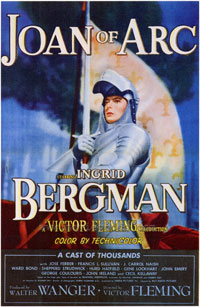
Joan of Arc is a 1948 American epic historical drama film directed by Victor Fleming, and starring Ingrid Bergman as the eponymous French religious icon and war heroine. It was produced by Walter Wanger and is based on Maxwell Anderson's successful Broadway play Joan of Lorraine, which also starred Bergman, and was adapted for the screen by Anderson himself, in collaboration with Andrew Solt. It is the last film Fleming directed before his death in 1949.

Patric Knowles was an English film actor. Born in Horsforth, West Riding of Yorkshire, he later changed his name to reflect his Irish heritage. He made his film debut in 1932, and played either first or second film leads throughout his career. He appeared in films from the 1930s to the 1970s.
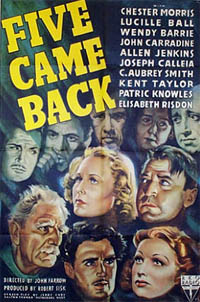
Five Came Back is a 1939 American black-and-white melodrama from RKO Radio Pictures produced by Robert Sisk, directed by John Farrow, written by Jerry Cady, Dalton Trumbo, and Nathanael West, and starring Chester Morris and Lucille Ball. The film was photographed by cinematographer Nicholas Musuraca. Although considered a B movie, the positive notices received by Ball helped launch her career as an A-list actress. Five Came Back is considered a precursor of the disaster film genre. The supporting cast features Wendy Barrie, John Carradine, C. Aubrey Smith, Kent Taylor, and Patric Knowles.
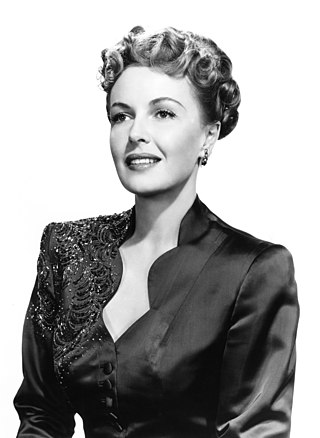
Mary Frances Gifford was an American actress who played leads and supporting roles in many 1930s and 1940s movies.

Bedlam is a 1946 American horror film directed by Mark Robson and starring Boris Karloff, Anna Lee and Richard Fraser, and was the last in a series of stylish horror B films produced by Val Lewton for RKO Radio Pictures. The film was inspired by William Hogarth's 1732–1734 painting series A Rake's Progress, and Hogarth was given a writing credit.

The Woman on the Beach is a 1947 American film noir directed by Jean Renoir and starring Joan Bennett, Robert Ryan, and Charles Bickford. It was released by RKO Radio Pictures. The film is a love triangle drama about Scott, a conflicted U.S. Coast Guard officer (Ryan), and his pursuit of Peggy, a married woman (Bennett). Peggy is married to Tod, a blind former artist (Bickford).

Street Girl is a 1929 pre-Code musical film directed by Wesley Ruggles and starring Betty Compson, John Harron and Jack Oakie. It was adapted by Jane Murfin from "The Viennese Charmer", a short story by William Carey Wonderly. While it was the first film made by RKO Radio Pictures, its opening was delayed until after Syncopation, making it RKO's second release. It was very successful at the box office, accounting for almost half of RKO's profits for the entire year.

The Gay Falcon is a 1941 American mystery thriller film directed by Irving Reis and starring George Sanders, Wendy Barrie and Allen Jenkins. A B film produced and distributed by RKO Pictures, it the first in a series of sixteen films about a suave detective nicknamed The Falcon. Intended to replace the earlier The Saint detective series, the first film took its title from the lead character, Gay Laurence. Sanders was cast in the title role; he had played The Saint in the prior RKO series. He was teamed again with Wendy Barrie who had been with him in three previous Saint films. The first four films starred Sanders as Gay Lawrence and the rest featured Tom Conway, Sanders' real-life brother, as Tom Lawrence, brother of Gay.
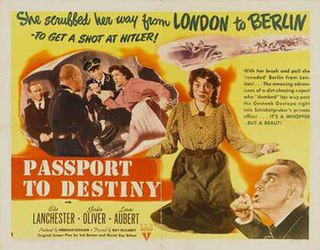
Passport to Destiny is a 1944 RKO Radio Pictures war film, starring Elsa Lanchester as an English charwoman who, believing herself invulnerable by being protected by a magic eye amulet, travels to Nazi Germany to personally assassinate Adolf Hitler.

Look Who's Laughing is a 1941 American comedy film directed by Allan Dwan It was produced and distributed by RKO Pictures. The film is built around a number of radio stars from the Golden Age of Radio and centers around radio personality Jim Jordan as Fibber McGee from the comic duo, Fibber McGee and Molly, who plans to build an aircraft factory in a small town. Look Who's Laughing was followed by Here We Go Again (1942), with many of the radio stars reprising their performances. It is also known by the alternative title Look Who's Talking.

Here We Go Again is a 1942 American film, a sequel to Look Who's Laughing. With RKO in financial trouble, with the success of the earlier zany comedy starring a bevy of radio stars, Here We Go Again put Fibber McGee and Molly in a search for where to celebrate the couple's 20th anniversary. They want to throw a big party but when everyone declines their invitation, they decide to go on a second honeymoon instead.

Valley of the Sun is a 1942 American Western film directed by George Marshall and starring Lucille Ball and James Craig.

A Bill of Divorcement is a 1940 film directed by John Farrow. It was also known as Never to Love and was based on a 1921 British play of the same name written by Clemence Dane that had been filmed in 1932 with John Barrymore and Katharine Hepburn.

The Falcon in Hollywood is a 1944 crime film directed by Gordon Douglas and stars Tom Conway in his recurring role as a suave amateur sleuth, supported by Barbara Hale, Jean Brooks, and Rita Corday. The film was the 10th of 16 in Falcon detective series.
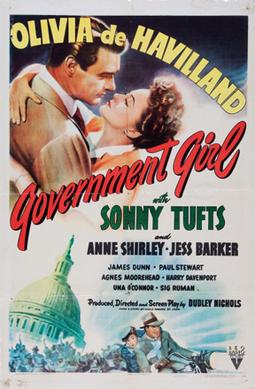
Government Girl is a 1943 American romantic-comedy film, produced and directed by Dudley Nichols and starring Olivia de Havilland and Sonny Tufts. Based on a story by Adela Rogers St. Johns, and written by Dudley Nichols and Budd Schulberg, the film is about a secretary working in Washington for the war administration during World War II who helps her boss navigate the complex political machinations of government in an effort to build bomber aircraft for the war effort.
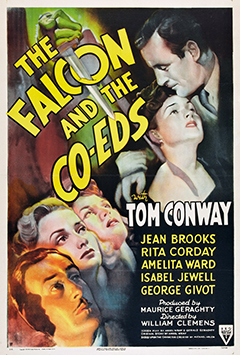
The Falcon and the Co-eds is a 1943 film under the direction of William Clemens, and produced by Maurice Geraghty, the same team that had worked on The Falcon in Danger (1943) and would stay together for the next film in the Falcon series. The Falcon and the Co-eds was the seventh of 16 in the Falcon series. The story and screenplay was by Ardel Wray, a frequent collaborator with Val Lewton in his RKO horror series, who added supernatural elements to the proceedings.
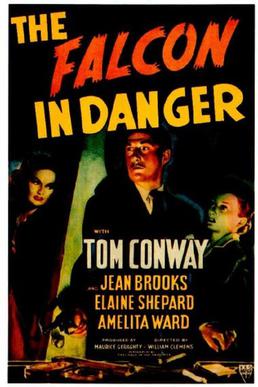
The Falcon in Danger is a 1943 American mystery film directed by William Clemens and starring Tom Conway, Jean Brooks, Amelita Ward and Elaine Shepard. The film was the sixth of thirteen The Falcon detective films produced by RKO, all starring Conway.

Flame of Calcutta is a 1953 American historical adventure film directed by Seymour Friedman and starring Denise Darcel, Patric Knowles and Paul Cavanagh. It was one of a number of historical films made by Sam Katzman's production unit for Columbia Pictures. It is set in India in the 1750s. Unusually for a B Movie of the era, it was shot in Technicolor.

The Marines Fly High is a 1940 action film, starring Richard Dix, Chester Morris and Lucille Ball and directed by George Nicholls, Jr. and Benjamin Stoloff from a story by A.C. Edington.




















